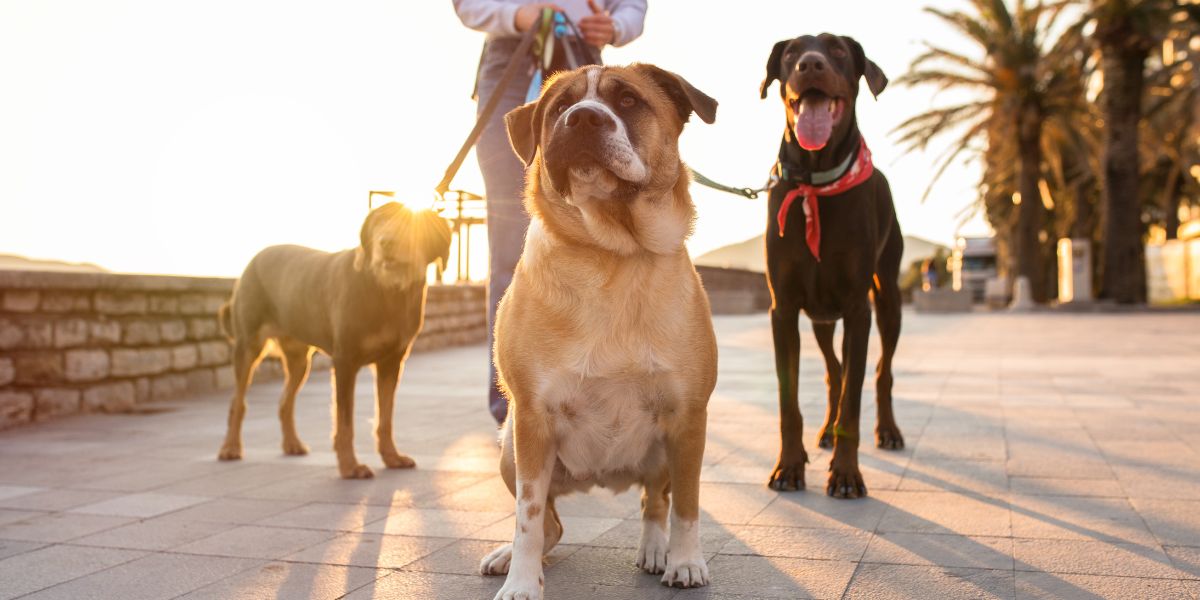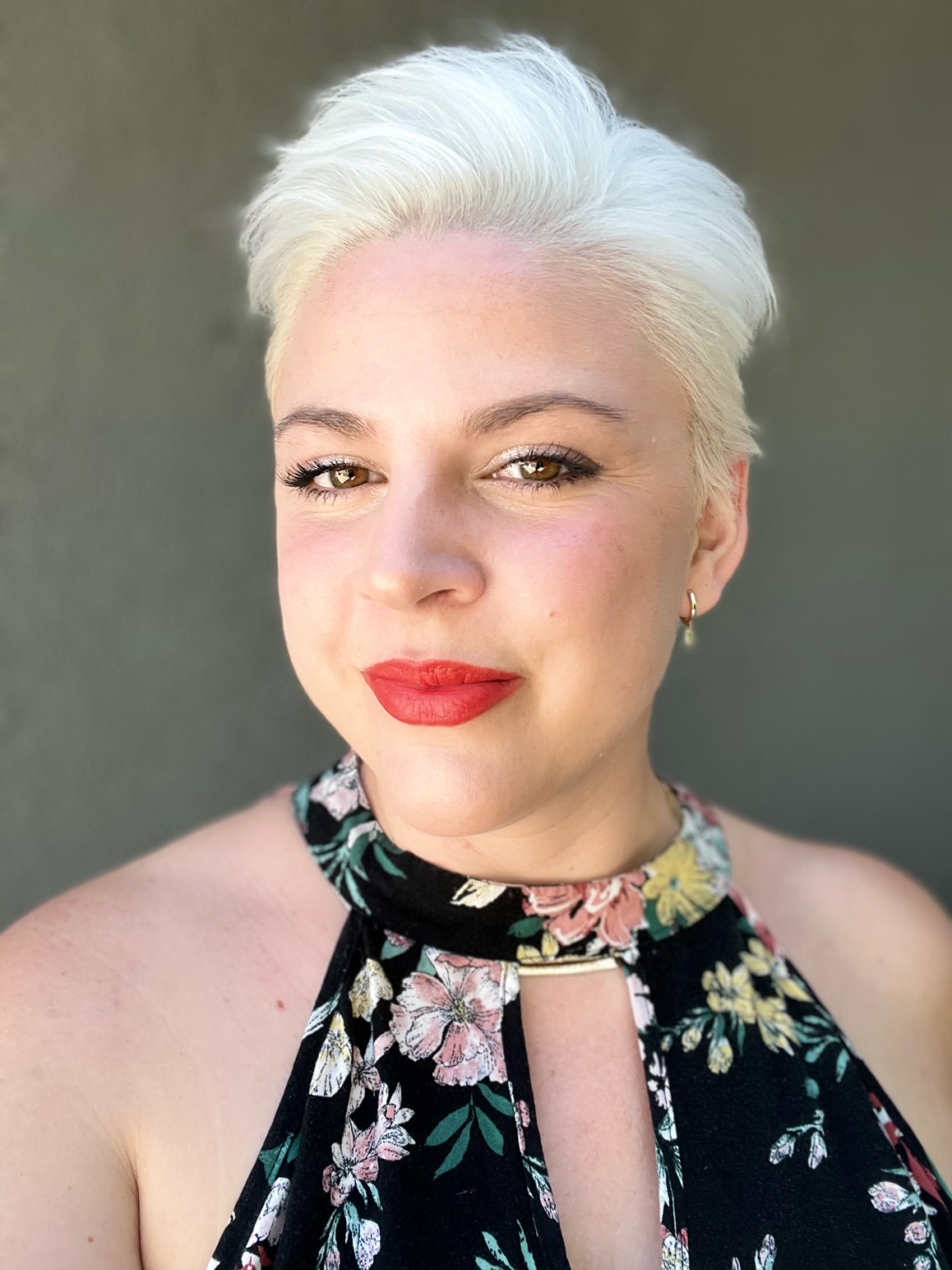Alyssa Rosenthal was born and raised in the peaceful mountains of Northern California. With the Trinity forest as her backyard, the family pets, and wildlife as her best friends, Alyssa grew to know dogs as the truest companions and nature as the best playground. She enjoys being outside most, never having a long-term indoor job once in her life. Her first job was as a lifeguard, and she continues her passion for being outside as much as possible. (Wear your sunscreen y’all)! Her other passions include art, road trips with her dog, photography, and nachos. She founded Leash L.A. in 2015 to continue her devotion and love for working with dogs in nature. Through the years, she has continued to learn about and from dogs, cherishing each opportunity to grow, learn and pursue a dream filled with joy, laughter, respect, and, most of all, love.
Instagram: @alyssajrose
Website: LeashLA.com
Oh, it’s a great memory; it’s never bad. You know we all have our life cycle, of course, it’s sad, but he was a black lab and a black and tan coonhound, and he was my partner in crime. We did literally everything together.
He helped me grow the business, too, because he was such a good moderator. He was not overly energetic, and he wasn’t blase; he was just a good fit for all the dogs and any new dogs that came into the pack.
So he helped grow the business and let me know where it was comfortable and what dogs fit and what dogs didn’t.

I moved to Los Angeles to be a makeup artist. That’s what I wanted to do, and then I started doing it, and I didn’t love it. So I started looking for a job, and I didn’t know what I wanted to do, so then I started working for this dog walking company.
I applied on a whim. Growing up, I’ve always loved dogs; they’re just amazing. When I started working for this company, it was like a light clicked. To just learn and communicate with another species was so powerful, just like learning another language.
I knew immediately that I wanted to branch out and make my own business and make my career out of speaking with dogs and their humans.
No. We primarily do pack walks, so we don’t do a lot of individual walks unless it’s like a special need or occasion.
I’ll take it anywhere from four to seven or eight within a pack walk.
Yes. It’ll be me or my staff. We each have our own set of dogs, and we have the route we pick. It sounds like a lot, but it’s actually easier when they’re in a pack.
When there are more dogs, it becomes a little easier because everyone falls in line better. When it’s one or two, they can get more distracted, and they have that independence of like, “oh, I want to do this, I want to do that,” but when you’re working in a pack, and you have that energy, and everyone falls in line.
I don’t allow the dogs to be in front of me. I want to be in front. I’m the one that’s supposed to look out for them. They’re not supposed to do that for me. When we have our dogs walking in front of us, it creates a little more anxiety within the dog because they think, “I need to be the first one to scope out the first sights ahead of us.”
A lot of them do want to go toward the front and its training, the energy, and the communication.
I like to think of dog training and working with dogs as a language. We’re listening, we’re learning, and we’re getting on the level of the dog instead of letting them run the show or working together.
It takes a certain energy and calmness that you need to have to be able to control that many dogs.
They want calm leaders. They want stability. So when we’re calm, they can be calm, and when we set boundaries, then they can follow boundaries.
Yes. You get to know them really well, and I actually have a couple of new puppies that are coming in, so I’ve been doing a lot more training, and a lot of those training clients have shifted over to the pack.
There’s a core group that I’ve been working with for seven years, and then there are the newbies, and it is hard to get them to understand the mode of the pack.
Especially puppies, they tend to be a little less focused. They don’t have the attention span that an older dog does, but the older dogs are really good about being an example to the younger dogs and kind of keeping them in check.
No. For pack walking, me, or my staff, will pick up the dogs, and then we do an hour on the ground. So pick up plus the hike/walk means we’ll typically be out with them for three to four hours.
Some of the owners work a lot and aren’t able to be home to take their dogs on a walk. Some of them work from home, but they need to focus on work, and some of the other owners have injuries that prevent them from being able to take their dogs out.
I have a lot of clients actually that have just had babies. A lot of people that have just had children are overwhelmed, and they want their dogs to still get the attention that they need and the exercise that they need.
When I started, I would do individual walks, and I wouldn’t turn dogs away unless they were aggressive to a point where it wasn’t healthy for me or the dog to be out in a public situation.
Now there’s an intro test for the dogs. I’ll take them out once by myself to just get the energy to see how we communicate, and if I feel that it’s a good fit to be integrated into the pack, I’ll do it at a small level.
I’ll take them with two or three other dogs. It’s about integration, and there are some dogs that just aren’t fit.
I moved to the San Gabriel Valley in 2010. Specifically, Los Angeles.
I went to school at Southern Oregon University.
I didn’t. I grew up in Northern California, and it’s funny because a lot of people think I grew up in the Bay, and that to me is central California because there’s still a lot of California after the Bay.
I grew up in Trinity County, which is a three-hour drive to the border of Oregon. I grew up in the mountains of Trinity County National Forest next to Mount Shasta.
I just played outside all day. That’s what my brothers and I did. It was like nature was our babysitter. It was so cool because I don’t think a lot of people get to experience that kind of communication with nature.
You know, they say if you can make it in L.A., you can make it anywhere, and when I first got here, it was brutal. I didn’t think I was going to make it here. That first year or two was hard, and then once you kind of get your stride and you learn the energy of the city, and you know how to make it work for you, everything kind of opens up.
That is what kind of kept me here and then also living near the San Gabriel Valley, and I think that’s what’s kept me here. It’s just more familial. It’s smaller and has that smaller-town feel even though it’s quite a Metropolis.
I definitely think that this area is a reason why I’m still in L.A., and I’m thriving.
What I shared with you is that often, people can derive hope or get some courage by hearing someone else share their story.
I have struggled with mental health my whole life. I’ve been on this antidepressant and that antidepressant, and I was always kind of trying to figure out what this inner darkness was.
I thought it was a part of me, you know, I called it my personal hexis, which is a reference to FernGully, it was the villain in the movie, and it’s this oozy tar-like blob that gets trapped in a tree, but then people are deforesting, and they come in and cut down this tree, and the hexis gets out and starts to just take over, but it’s like this gooey gross black blob, and that’s kind of how I felt what was on my brain and in my heart.
It felt like hexis was ready to come and take over, and I was always fighting that back which was so hard. It’s just mental health is such a hard battle.
Then not long ago, I was diagnosed with bipolar disorder. It was a big diagnosis, and I know what it is now.
I am on medication that helps me thrive more than I ever have, and I’m honestly really proud of myself.
I built this business. I had this tenacity. I did all of it through struggling with severe mental health issues, and now I can look back, and I’m just like, wow. I did a good job, and I feel really fortunate because I have family and friends. I have a community that was really able to hold me up when I wasn’t able to do it myself, and I think that is so important.
There’s bipolar one and bipolar two. My psychiatrist kind of spoke of it more as a spectrum. Everyone experiences bipolar, or any mental health differently.
I spend most of my bipolar time in a deep depression before medication. Sometimes literally unable to get out of bed or feed myself.
There would be times when I had to ask a friend to take B.O., my dog, because I just couldn’t take care of him. I could barely do it for myself, and then on the other side were my manic episodes and more severe agitation. I would get so mad and couldn’t control it.
I would go between deep depression and then these high agitation moments.
I would, but it’s like you’re underwater, and you can’t fully breathe because you’re so deep. You’re trying to get to the surface so you can breathe. It always was just like teetering below that surface.
A lot of times, it was that middle ground where I wasn’t sure if I was going to be pulled back down or go back up.
I told my psychiatrist that before my diagnosis and getting the right medication, it was like my brain had been this musty old storage room that had gross boxes and cobwebs and mold, and it’s just dingy, and then after being medicated in the right way, it was like someone came in moved all the boxes around cleaned with cobwebs and switched on the light, and I didn’t know that I could feel like this.
There tend to be two ways that a person is or becomes bipolar.
One is genetic, and the other one is severe trauma and childhood. Unfortunately, mine is the latter. I don’t have a history of bipolar in my family, but I did have a very traumatic childhood.
I believe all sorts of different therapies are being developed. I do traditional Psychotherapy and therapy, and I don’t know, and I don’t think science knows yet if there’s actually a way to go and rewire those neural pathways.
Maybe there is.
Yes, particularly with my friends. I moved to L.A. with my college buddies, so they’ve been my friends for like 15 years.
They are family, and they’ve seen every side of me, so that makes it easier for me to communicate with them, and they’re just so gracious and so giving, and you know it takes up a lot of space to be there for someone and they just always have been, and I’m very fortunate to have.
I brought Bo’s skull. Bo was twelve and a half when he died, and to the day before he died, he acted like a three-year-old dog. He always had energy. We didn’t know it was coming because he had cancer and some kidney issues, but also, it was a sudden thing.
So we hadn’t lined it up yet, so it was like that day I emailed and asked if they could preserve his bones.
Everything’s intact, and I just have all of the free-form bones.
He was a black and tan coonhound and black lab. Coonhounds were bred for hunting raccoons, and his nose was amazing.
We did nose work, and we did a competition once, and he got third place in his first competition.
He had an impeccable nose.
I got Bo when he was around three, and it’s kind of interesting it ties back to my business.
He was a client’s dog, and the first time I met him, I was working for the other dog walking company, and I was training, so I was going out with another woman that was kind of showing the ropes and showing the dogs that I would be taking over.
I took him for his walk and dropped him off, and as we were going back to the car, I said that this dog was supposed to be mine.
From the moment that day of meeting him and she’s like, oh my gosh, that would be so cool because his previous owners were elderly, and he is just full of energy all the time, and he had actually pulled one of them down, and she had to have knee surgery because of it.
That’s when they said we can’t give him what he needs, he’s too much for us, and they asked, and they knew I had a good bond with him, and they’re like do you want to adopt him and before they could finish the sentence I was like yes!
His name is Ernest, Ernie for short. He was my father’s dog. My father, maybe a year after Bo passed, also passed away from cancer, and I never even met Ernie before I adopted him.
My dad’s wife called me, and at the time, I was actively looking for a dog, and she said she couldn’t give him the life he wants, and I was like, absolutely, yes.
It was another thing that I just knew in my soul.
He is one hundred percent mutt. We had the DNA done, and he’s great Pyrenees which I think is the one that shows the most, and he’s a German Shepherd, Doberman Pinscher, and Australian Cattle Dog.
There’s actually a book called Coyote America that I recommend everyone read. It pertains to this because there are urban coyotes, and then there are non-urban coyotes.
Urban coyotes have learned to live with humans. Wild coyotes are more timid, and they run away because they don’t want to interact with humans.
Here the urban coyotes don’t care. I’ve been hunted well; the dogs have been hunted by coyotes a couple of times.
One time we were on a hike at six or seven in the morning, and Bo started barking, and I looked around, and I saw one in front of us. So we went the other way, and it followed us, and so I started throwing rocks at it making noise, and it kept following us.
Then another one comes out from another spot, and they start to triangulate, but there were only two. They come, and finally, you know, with Bo’s barking and me throwing things at them, they backed off.
Another time it was in the neighborhood, and I had two small dogs with me and Bo, and it was dark.
One popped out in front of us, and then another one came behind us at the same time, and then there was one across the street, and so we were triangulated.
They were coming, and Bo was losing his mind. He was barking, and one of the dogs I had slipped out of her leash, so she was free, and I was panicked because they could eat her. She’s small, so they could easily come and just swipe her away.
So I picked her up, and Bo is pulling really trying to get to the coyotes and then Jasmine who’s just like I don’t know what’s going on, and so I’m carrying her holding two dogs, and then they were not backing off and so I just started screaming and running.
I started running toward them, and that got them to back off. We were right around the corner from my house, so we were able to get back home.
For pack walking and dog training, you can reach me at LeashLA.com, and my Instagram is @alyssajrose

My 1st recommended place in SGV
My 2nd place recommendation of SGV
My 3rd place recommendation of SGV



